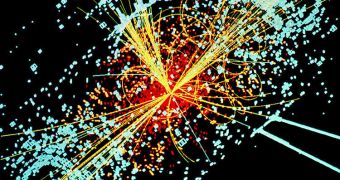Scientists at CERN are edging ever closer to calling the Higgs boson, i.e. the particle discovered at the Large Hadron Collider, the Higgs boson. While physicists said they discovered a particle which looked like the Higgs boson, they were weary of actually calling that, pending more analysis.
Now though, the scientists behind the two big experiments at LHC that are looking for the "God particle," Atlas and CMS, are taking a big step and calling the Higgs a Higgs.
"The preliminary results with the full 2012 data set are magnificent and to me it is clear that we are dealing with a Higgs boson though we still have a long way to go to know what kind of Higgs boson it is," CMS spokesperson Joe Incandela said.
"The beautiful new results represent a huge effort by many dedicated people. They point to the new particle having the spin-parity of a Higgs boson as in the Standard Model. We are now well started on the measurement programme in the Higgs sector," ATLAS spokesperson Dave Charlton added.
It is clear then that this particle is the Higgs boson, or rather, a Higgs boson. Such is the nature of science that it's never actually "done."
While scientists are now sure this is the Higgs boson, they're not sure whether this is the only Higgs, if it's the particle predicted by the Standard Model, or just the lightest Higgs boson as predicted by other theories, such as supersymmetry.
Up until now, the big question was whether the Higgs boson had a spin of zero. Scientists were pretty sure that was the case, but they couldn't rule out a spin of two.
Now, it's clear that the Higgs boson has a spin of zero, as predicted by the Standard Model.
Moving forward, the focus will be on discovering whether there are more, heavier Higgs bosons. The data that's been gathered so far may still hold the answer, scientists are still analyzing it, but the more interesting discoveries will come once the LHC starts working again at double the current power in 2015.

 14 DAY TRIAL //
14 DAY TRIAL //